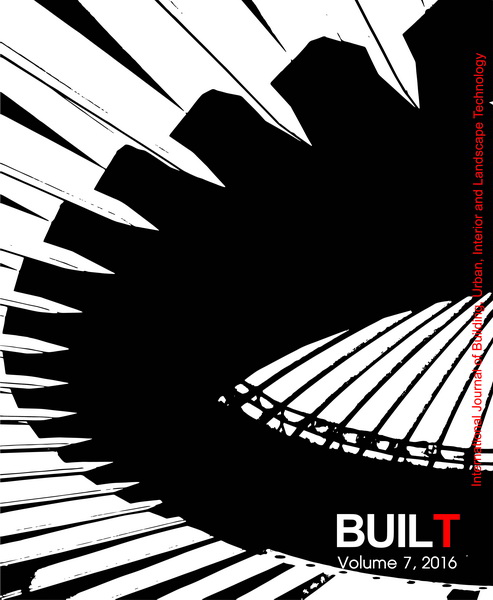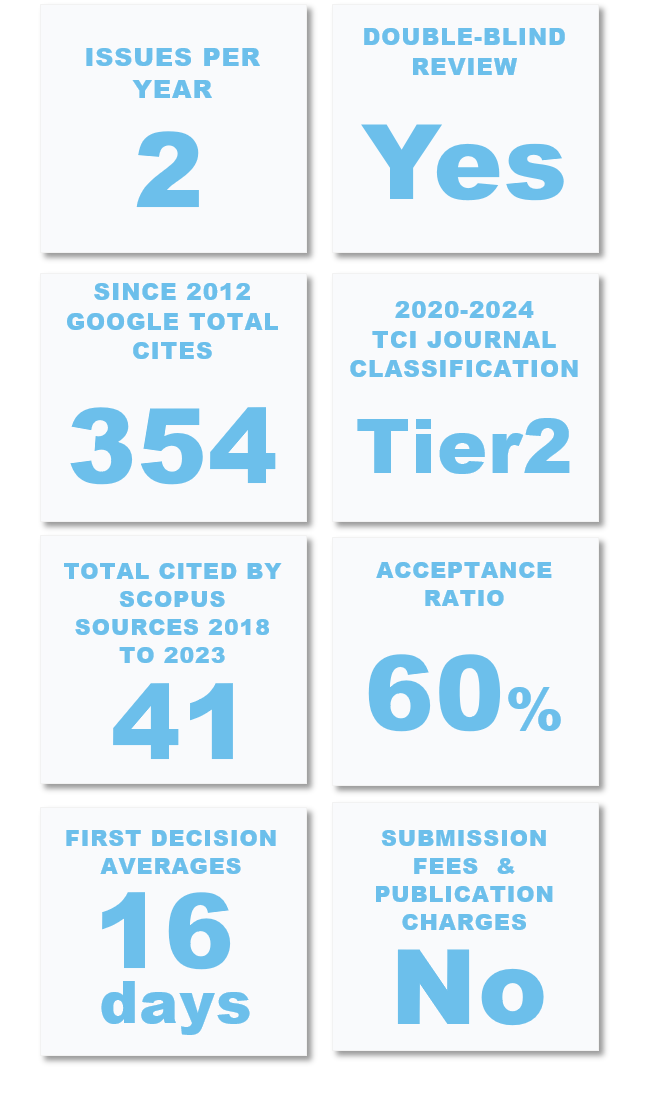Field Investigation on Indoor Thermal Performance of a High-rise Residential Unit in Bangkok
Keywords:
High-rise, Residential building, Urban area, Field investigation, Indoor thermal comfortAbstract
As an alternative solution to support an urbanization in Bangkok, high-rise condominium has dramatically increased the energy consumption. An air conditioning system that enables the unit plays the major role in reaching thermal comfort. A field investigation was conducted on indoor thermal environment of a one bedroom unit (a corner room with single-sided ventilation) during May 9th to June 8th, 2015, summer season. The hypothetical cases were devised to represent the room with different types of ventilation in order to examine the potential of using natural ventilation during the day and also reduce the time of air conditioning usage. The results show that by applying natural ventilation during the day along with air conditioning system during the night can effectively reduce indoor environmental temperature (EnvT). During the day with natural ventilation, indoor air velocity of 1.2 m/s could possibly provide acceptable indoor thermal comfort in some hours. However, thermal energy from high outdoor air temperature that enters room was absorbed within internal surfaces and resulted in the increasing of cooling load at night when air conditioning system was used.
Downloads
References
American Society of Heating, Refrigerating and Air-conditioning Engineers [ASHRAE]. (2013a). ASHRAE handbook: Fundamentals. Atlanta, GA: Author.
American Society of Heating, Refrigerating and Air-conditioning Engineers [ASHRAE]. (2013b). ASHRAE standard 55-2013: Thermal environment conditions for human occupancy. Atlanta, GA: Author.
Auliciems, A. (1981). Towards a psychophysiological model of thermal perception. International Journal of Biometeorology, 25(2), 109-122.
Auliciems, A. & Szokolay, S.V. (2007). Thermal comfort (2nd ed.). Retrieved August 31, 2015, from http://www.researchgate.net/publication/234169993_THERMAL_COMFORT.
Energy Policy and Planning Office. (2015). Energy statistics of Thailand 2015. Ministry of Energy of Thailand. Retrieved June 28, 2016, from http://www2.eppo.go.th/info/cd-2015/index.html.
Electricity Generating Authority. (2016). [Net peak generation requirement]. Electricity Generating Authority of Thailand. Retrieved August 10, 2016, from http://www.egat.co.th/index.php?option=com_content&view=article&id=348&Itemid=116.
Gagge, A. P., Fobelets, A. P. & Berglund, L. G. (1986). A standard predictive index of human response to the thermal environment, ASHRAE Transac, 92(2B), 709-731.
Khedari, J., Yamtraipat, N., Pratintong, N. & Hirunlabh, J. (2010). Thailand ventilation comfort chart. Energy and Buildings, 32(3), 245-249.
Kubota, T., Jeong, S., Toe, D. H. C. & Ossen, D. R. (2011). Energy consumption and air-conditioning usage in residential buildings of Malaysia. Journal of International Development and Cooperation, 17(3), 61-69.
Li-Zenn Publishing. (2015). New design condominium Thailand. Bangkok, Thailand: Author.
Meteorological Department. (2013). Bangkok’s weather data, 2004-2013 [computer file]. Meteorological Department of Thailand.
Plus Property. (2016). Plus property focus: Half-year research paper, July-December 2015. Retrieved March 30, 2016, from http://www.plus.co.th/News-and-Articles/Plus-Property-Focus-Half-year-research-paper-July---December-2015.
Rangsiraksa, P. (2006). Thermal comfort in bangkok residential buildings, Thailand. Proceedings of the 23thConference on Passive and Low Energy Architecture. Retrieved July 12, 2016, from http://www.unige.ch/cuepe/html/plea2006/Vol2/PLEA2006_PAPER234.pdf.
Szokolay, S. V. (2008). Introduction to architectural science: The basis of sustainable design (2nd ed.). Woburn, MA: Architectural Press.United Nations, Department of Economic and Social Affairs, Population Division [UNPD]. (2014). World urbanization prospects: The 2014 revision, highlights. Retrieved July 10, 2016, from https://esa.un.org/unpd/wup/Publications/Files/WUP2014-Highlights.pdf.
United Nations, Department of Economic and Social Affairs, Population Division [UNPD]. (2015). World population prospects: The 2015 revision, key findings and advance tables. Retrieved July 10, 2016, from https://esa.un.org/unpd/wpp/publications/files/key_findings_wpp_2015.pdf.
United Nations, Department of Economic and Social Affairs, Statistics Division. (2015). World statistics pocketbook 2015 edition. Retrieved July 10, 2016, from http://unstats.un.org/unsd/publications/pocketbook/files/world-stats-pocketbook-2015.pdf.
United Nations, Department of Economic and Social Affairs, Statistics Division. (2016). World Statistics Pocketbook 2016 edition. Retrieved July 10, 2016, from http://unstats.un.org/unsd/publications/pocketbook/files/world-stats-pocketbook-2016.pdf.
Downloads
Published
How to Cite
Issue
Section
License

This work is licensed under a Creative Commons Attribution-NonCommercial-NoDerivatives 4.0 International License.












